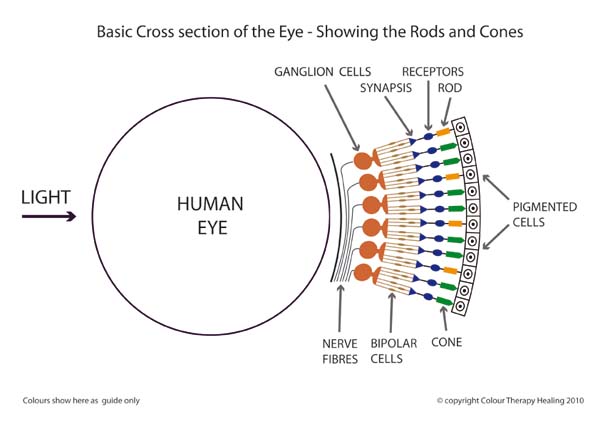The way in which most of us actually see colour, is through the sensors in the retina of our eyes called rods and cones.
The rods are sensitive to low light and the cones, which require a greater intensity of light, are sensitive to colour. The message is passed to the optic nerve and then on to the brain.
We see colour because of the Rods and Cones in our eyes
There are about 120 million rods and about 6 to 7 million cones, in the human eye.
Rods are more sensitive than the cones but they are not sensitive to colour, they perceive images as black, white and different shades of grey. More than one thousand times as sensitive, the rods respond better to blue but very little to red light.
Each cone contains one of three pigments sensitive to either RED GREEN or BLUE.

Each pigment absorbs a particular wavelength of colour. There are short wavelength cones that absorb blue light, middle wavelength cones that absorb green light, and long wavelength cones that absorb red light.
The eye picks up colour and light by the Rods and Cones in the eye. It is the Cones that detect Colour. Each cone contains one of three pigments sensitive to either RED GREEN or BLUE.
When we observe a colour that has a wavelength between that of the primary colours red, green and blue, combinations of the cones are stimulated. An example could be that yellow light stimulates cones that are sensitive to red and to green light. The result is that we can detect light of all colours in the visible spectrum.
People who suffer colour blindness have less numbers of particular cones than normal, so they get colours confused.
If we lose our eye sight, the body adapts and receives colour rays through the skin. It takes time for the body to adapt, but it has been shown that people who are blind, can differentiate between different colours.
See also > why things are the colour they are
